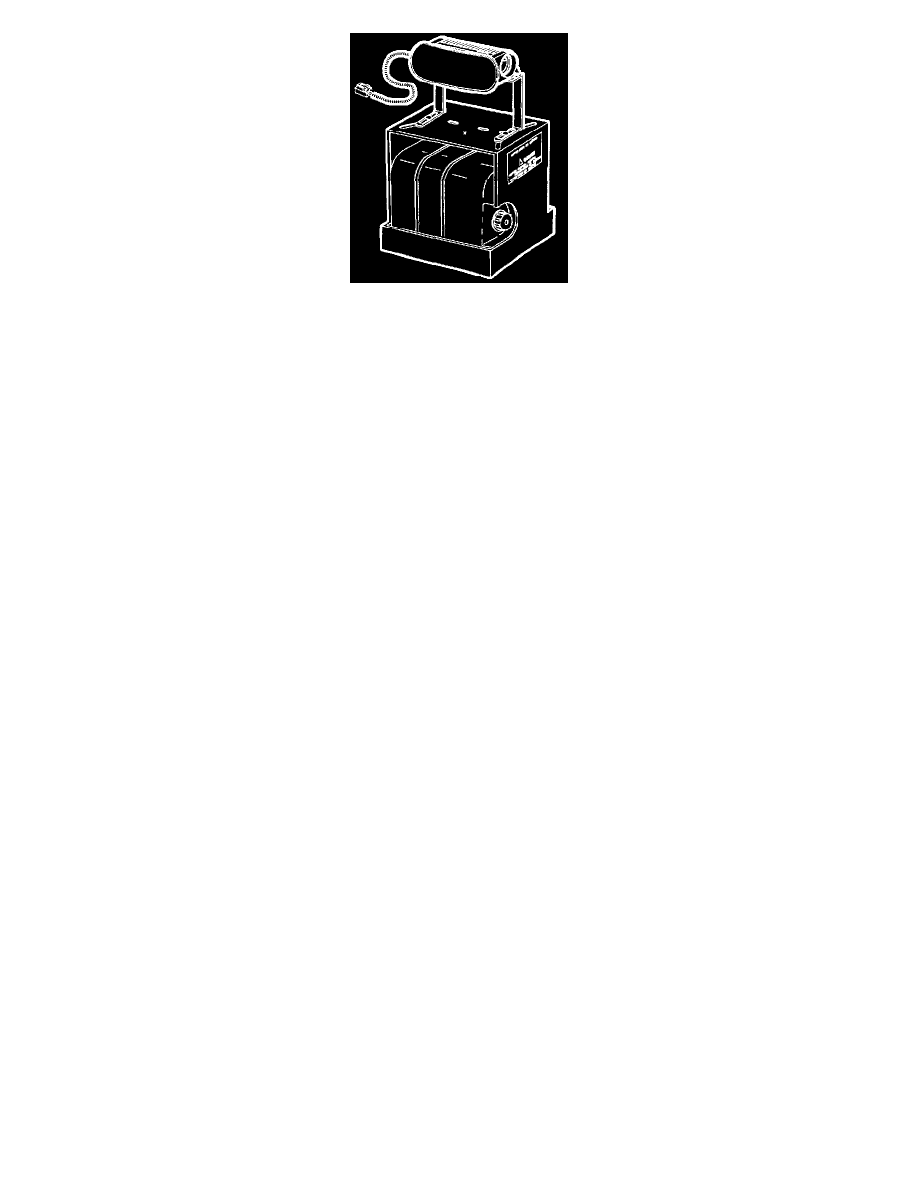SW2 L4-1.9L DOHC VIN 7 (1997)

6. Fill the plastic reservoir in the fixture with water or sand. This is necessary to provide sufficient stabilization of the fixture during deployment.
7. Attach the passenger inflator module in the Passenger Side SIR Module Deployment Fixture using the Flange/Arm Mounting Method as shown in
the illustration. SECURELY HAND TIGHTEN ALL FASTENERS PRIOR TO DEPLOYMENT
NOTICE: If the fasteners are damaged after deployment, use replacement bolt, Saturn Part Number 11505192, and nut, Saturn Part Number 11507053.
8. Continue with the same procedures as detailed for DEPLOYMENT OUTSIDE THE VEHICLE - DRIVER INFLATOR starting with Step 9.
Handling A Deployed Inflator Module
After an inflator module has been deployed, the metal canister and surrounding areas of the inflator module will be very hot. Do not touch the metal
areas of the inflator module for about 10 minutes after deployment. If the deployed inflator module must be moved before it is cool, wear gloves and
handle by the air bag or vinyl trim.
After the inflator module has been deployed, the surface of the air bag may contain a powdery residue. This powder consists primarily of corn starch
(used to prevent bag from adhering to itself over the life of the product) and by-products of the chemical reaction. Sodium hydroxide dust (similar to lye
soap) is produced as a by product of the deployment reaction. The sodium hydroxide then quickly reacts with atmospheric moisture and is converted to
sodium carbonate and sodium bicarbonate (baking soda). Therefore, it is unlikely that sodium hydroxide will be present after deployment. As a
precaution, however, gloves and safety glasses are recommended to prevent any possible irritation of the skin or eyes.
Scrapping Procedures
During the course of a vehicle's useful life, certain situations may arise which will necessitate the disposal of a live (undeployed) inflator module.
Before a live (undeployed) inflator module can be disposed of, it must be deployed. Live (undeployed) inflator modules must not be disposed of through
normal refuse channels.
CAUTION: IN ORDER TO PREVENT ACCIDENTAL DEPLOYMENT OF THE AIR BAG WHICH COULD CAUSE PERSONAL INJURY
DO NOT DISPOSE OF AN UNDEPLOYED INFLATOR MODULE AS NORMAL SHOP WASTE. THE UNDEPLOYED INFLATOR
MODULE CONTAINS SUBSTANCES THAT COULD CAUSE SEVERE ILLNESS OR PERSONAL INJURY IF THE SEALED
CONTAINER IS DAMAGED DURING DISPOSAL. USE THE FOLLOWING DEPLOYMENT PROCEDURES TO SAFELY DISPOSE OF
AN UNDEPLOYED INFLATOR MODULE. FAILURE TO DISPOSE OF AN INFLATOR MODULE AS INSTRUCTED MAY BE A
VIOLATION OF FEDERAL, STATE, OR LOCAL LAWS.
If a vehicle is the subject of a "Product Liability Report" related to the SIR system and is subject to a preliminary investigation, DO NOT DEPLOY the
inflator module and DO NOT ALTER the SIR system in any manner. If a vehicle is the subject of a campaign affecting inflator modules, DO NOT
DEPLOY the inflator module. Follow instructions in the campaign bulletin for proper disposition of the inflator module.
If an inflator module is replaced under warranty in the vehicles listed above, DO NOT DEPLOY the air bag.
Some vehicles equipped with SIR systems that have live (undeployed) inflator modules may have to be scrapped because they have completed their
useful life or have been severely damaged in a non-deployment type accident. In situations which require deployment of a live (undeployed) inflator
module, deployment may be accomplished inside or outside the vehicle. The method employed depends upon final disposition of the particular vehicle.
Shipping Procedures For Live (Undeployed) Inflator Modules
